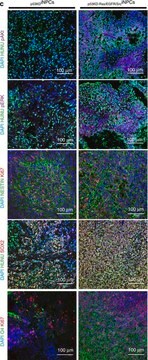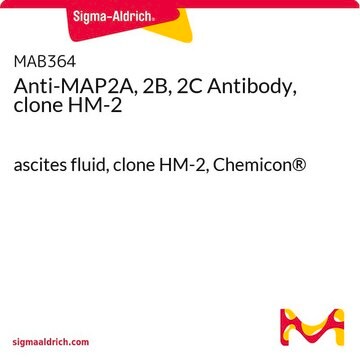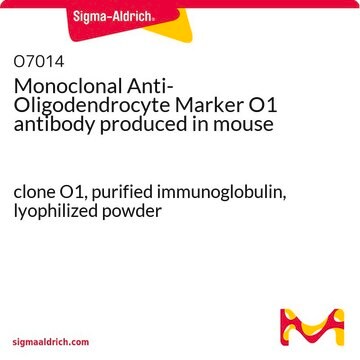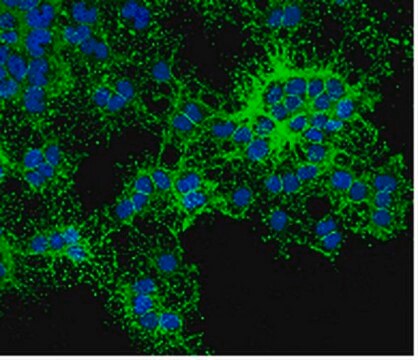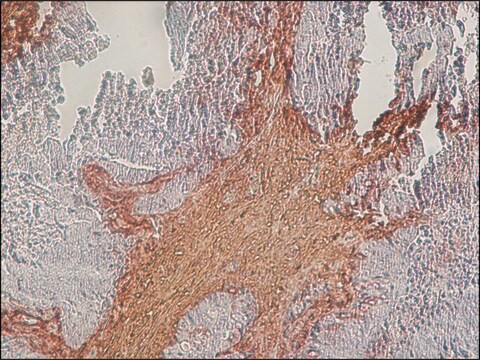MAB344
Anti-O1 Antibody, clone 59
clone 59, Chemicon®, from mouse
About This Item
Empfohlene Produkte
Biologische Quelle
mouse
Qualitätsniveau
Antikörperform
saturated ammonium sulfate (SAS) precipitated
Klon
59, monoclonal
Speziesreaktivität
chicken, rat, mouse, human
Hersteller/Markenname
Chemicon®
Methode(n)
immunohistochemistry: suitable
Isotyp
IgM
Versandbedingung
wet ice
Posttranslationale Modifikation Target
unmodified
Spezifität
Immunogen
Anwendung
Neurowissenschaft
Neuronen- & Gliamarker
Note: 01 is a lipid which is released from the membrane by alcohol.
Optimal working dilutions must be determined by the end user.
Physikalische Form
Lagerung und Haltbarkeit
Hinweis zur Analyse
Oligodendrocyte culture, Brain
Sonstige Hinweise
Rechtliche Hinweise
Haftungsausschluss
Lagerklassenschlüssel
10 - Combustible liquids
WGK
WGK 2
Flammpunkt (°F)
Not applicable
Flammpunkt (°C)
Not applicable
Analysenzertifikate (COA)
Suchen Sie nach Analysenzertifikate (COA), indem Sie die Lot-/Chargennummer des Produkts eingeben. Lot- und Chargennummern sind auf dem Produktetikett hinter den Wörtern ‘Lot’ oder ‘Batch’ (Lot oder Charge) zu finden.
Besitzen Sie dieses Produkt bereits?
In der Dokumentenbibliothek finden Sie die Dokumentation zu den Produkten, die Sie kürzlich erworben haben.
Artikel
Human iPSC neural differentiation media and protocols used to generate neural stem cells, neurons and glial cell types.
Protokolle
Step-by-step culture protocols for neural stem cell culture including NSC isolation, expansion, differentiation and characterization.
Unser Team von Wissenschaftlern verfügt über Erfahrung in allen Forschungsbereichen einschließlich Life Science, Materialwissenschaften, chemischer Synthese, Chromatographie, Analytik und vielen mehr..
Setzen Sie sich mit dem technischen Dienst in Verbindung.